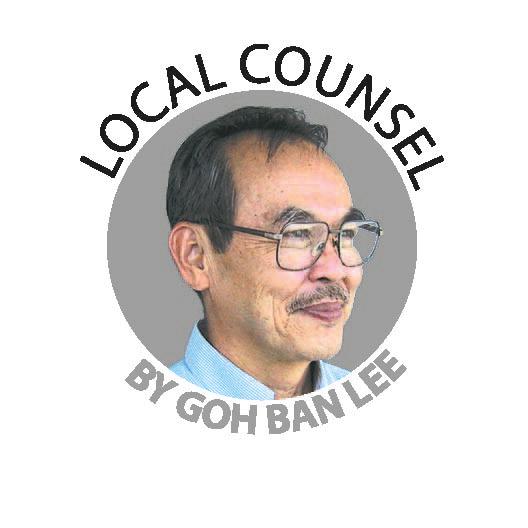THERE have been reports that Penang property owners will have to pay higher assessment rates next year. The hike is to account for rising development and administrative costs incurred by the City Council of Penang Island and Seberang Perai City Council. The rates have not been reviewed since 2005.
As expected, there were strong protests from the majority of ratepayers. There were also negative reactions from business groups, non-governmental organisations and opposition parties.
The president of the Penang Chinese Chamber of Commerce, Datuk Seri Hong Yeam Wah, justified the increase since there has been no change in rates for the last 15 years. But he said it is important to determine a suitable increment and increase the rates gradually over a period of several years.
The Consumers’ Association Penang (CAP) urged the state government to stop “wasteful” projects instead of increasing the tax. Its president, Mohideen Abdul Kader, said it was not necessary to spend millions on projects during challenging times. He suggested lower taxes for owner-occupied premises.
Assessment tax, or cukai pintu, is a major source of revenue for local authorities for the provision of services. The assessment rate of a property is a function of two factors: annual value and percentage of rates. It varies from state to state.
For most local authorities, the annual value of a property is the annual rental value. In Johor, however, the local authorities use the improved value, which is basically the current market price, instead of annual value.
Once the annual value or improved value of a property is established, revaluation can only be done every five years, unless the property undergoes renovation or change of use.
However, most local authorities do not carry out revaluation exercises every five years to ensure that assessment rates payable reflect changes in the annual value or improved value of the properties. Usually, revaluation ends up imposing higher assessment rates, and this is a highly unpopular move.
The percentage of rates is determined by the councillors of each authority. Ideally, the quantum is based on the budgetary needs of the local authority. Contrary to popular perception, councillors are often reluctant to increase the quantum to avoid possible protests and criticism.
Any change in the quantum has to be approved by the state government, which is usually loath to authorise any increase, especially if a general election is around the corner. The reluctance to increase assessment rates puts a strain on the budget of many local authorities.
To make matters worse, most local authorities have huge assessment arrears. Although the law provides the councils with adequate power to recover outstanding arrears, including sealing and auctioning properties of defaulters, councils generally do not throw the book at the defaulters to recover the taxes. More drastic action is needed to collect the arrears.
Lack of funds is, of course, a problem. On the other hand, many ratepayers believe that it is the misuse of funds and inept management that accounts for poor services and dearth of development projects.
For those who hold strongly to the ideals of “no taxation without representation”, assessment rates are in fact unjustified in a situation where councillors are appointed.
However, most Malaysians are not too concerned about the ideals of representation as long as their taxes paid are put to good use. This includes keeping neighbourhoods clean and pleasant, and city centres attractive, efficient and liveable. They do not want to encounter frequent flash floods, clogged drains, littered streets, illegal hawking and illegal change of building use and building extensions.
In addition, ratepayers also want to see a fair and equitable tax burden. Owners of high-rise apartments and condominiums complain that they have to pay inordinately higher assessment rates compared with those who own landed properties, even though their units are smaller in area. Moreover, except for garbage collection and the provision of street lighting, services rendered by local authorities are on average much less to high-rise buildings. On top of that, condominium dwellers also pay maintenance fees.
In the last 15 years, the number of high-rise residential and commercial buildings has increased tremendously. This translates to an increase in assessment collections for the councils.
If councils are able to rein in unnecessary spending, ensure that revenue is put to good use for the benefit of residents, and impose a more equitable tax burden among owners of different property types, a reasonable rise in assessment rates can be achieved more fairly, with less protest.
Datuk Dr Goh Ban Lee is interested in urban governance, housing and urban planning. Comments: letters@thesundaily.com














